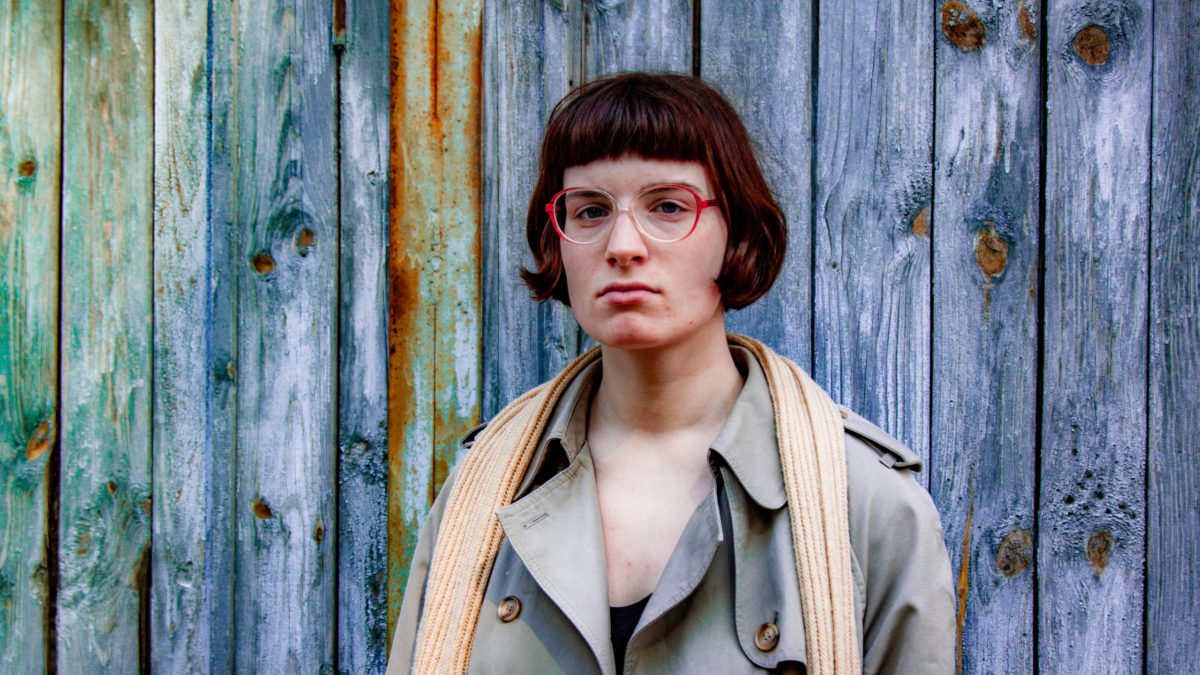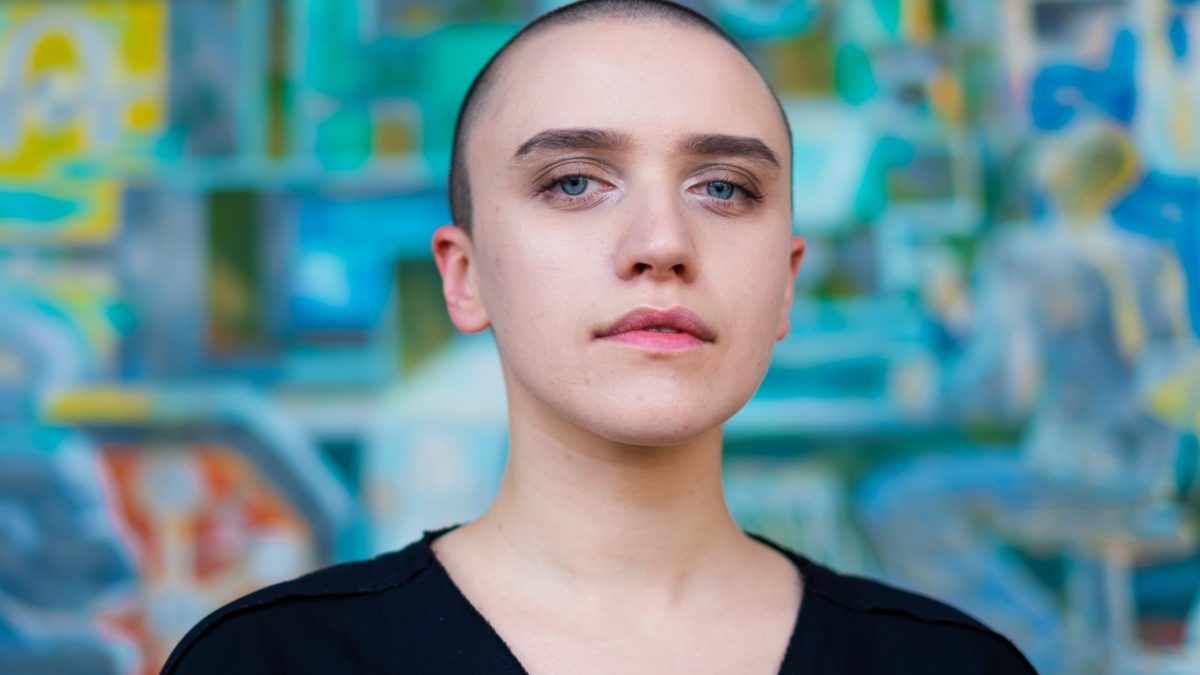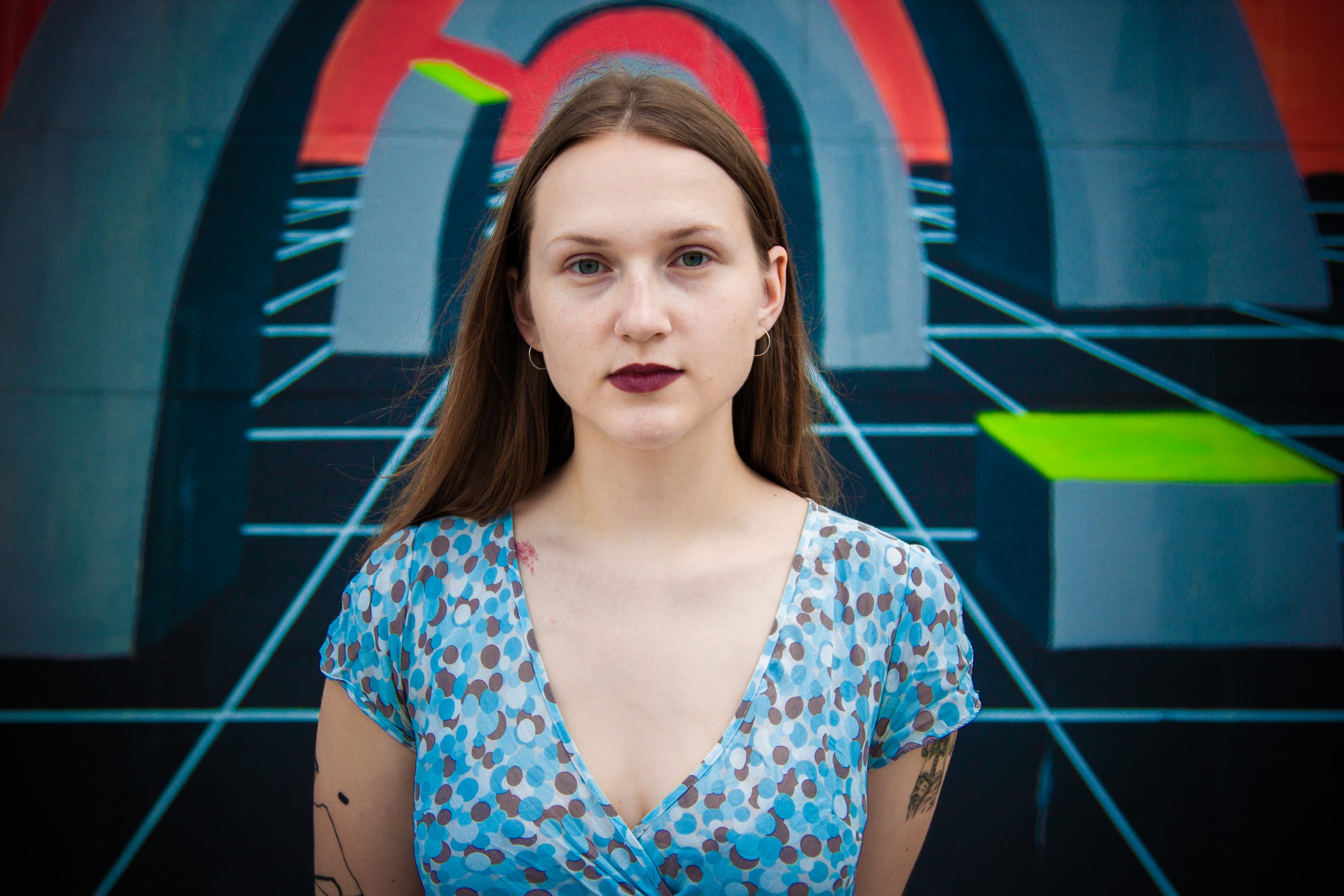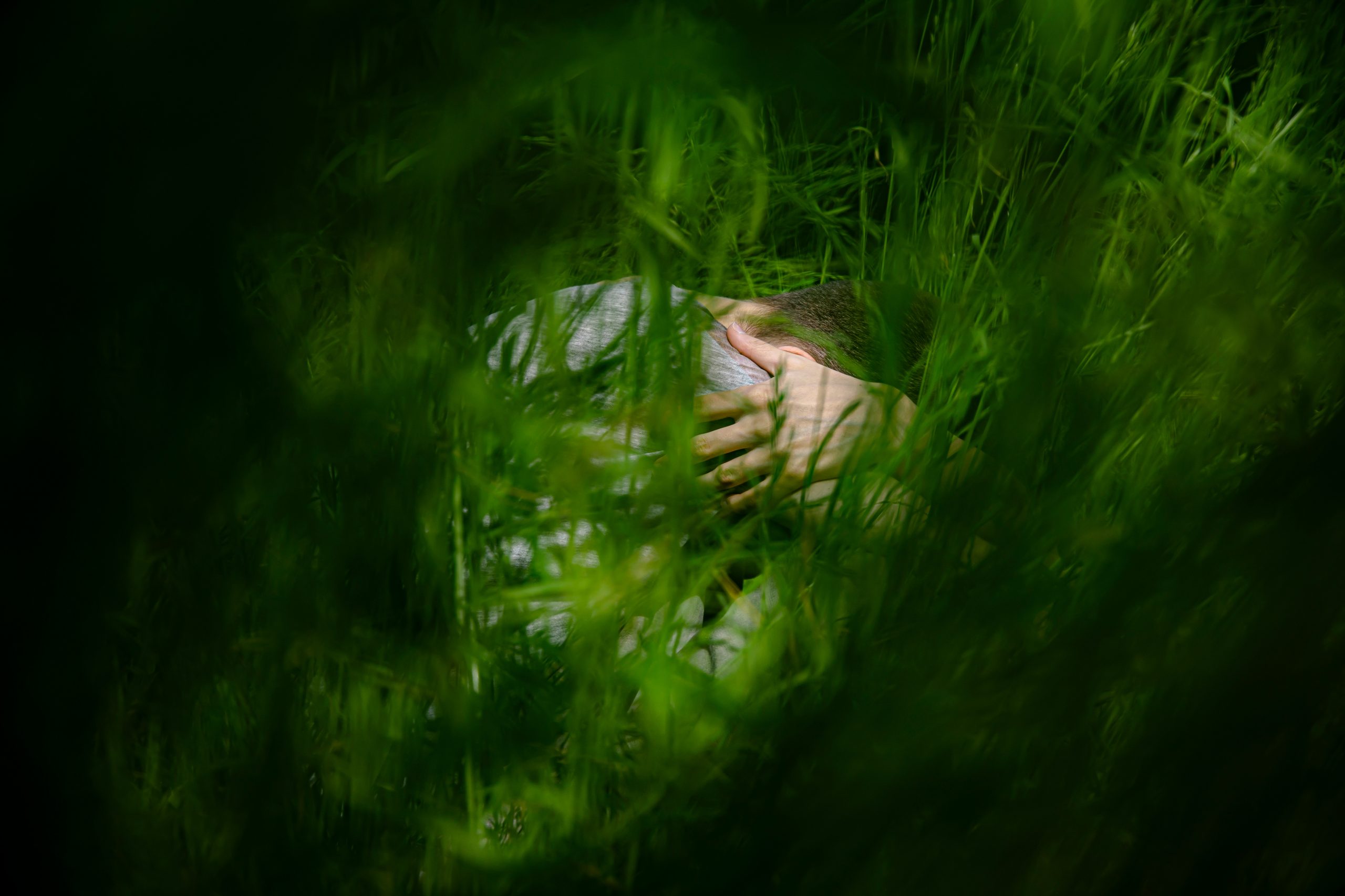On modern art, empowerment and precariat
10 August 2019
Editor: Bozhena Makovska
Translator: Maryna Isaieva
Photographer: Michael Tulsky
It was my first class when I got the note with the question “What would you like to do once you finished school?” I wrote: “I want to be a painter. I paint every day”. In moments of despair, I recall this piece of paper. I carry it deep in my heart.
I studied in an average school in one of the central districts of Kyiv, although not very prestigious. My first seven years in school passed in the atmosphere of bullying – class was not an ecological one. I remember how I was bullied, but I was also partly involved in bullying other kids. After all, my parents convinced me to move further, and I entered the maths oriented lyceum as I wanted to become an architect. The new class was full, it had more than thirty kids, and most of them were boys. They got more attention as it was believed that exactly boys would become engineers. Due to these two factors, at that moment, my emotional state only got worse, and I got depressed.
After the lyceum, I entered the State art school in Kyiv. We studied six times a week and above-average school subjects there were also life drawing classes, in high school, even the nude. This school is a very respected place. In the circle of elder artists, it is considered that if you want to be a serious painter, you need to go to school at first and then to the art academy to complete the whole academic course.
In the last grade, I began to paint in oils and was preparing to enter the National Academy of Arts in Kyiv. I was already painting watercolour well, and there was a teacher who laid hope for me. My decision to switch to other direction got him quite angry; he began to paint over, spoil my works, pretending to correct them. Everybody was telling me: you won’t enter, only one year left! I entered the academy from the first attempt.
I thought that I would learn academic art and raise it from its knees! But everything is falling apart there. Professors almost do not come to lectures. All of them are older people who cannot quit the job due to a scanty pension. Almost every month, one of them dies. After the third year of studies, I wanted to choose the sacral painting course, but the professor died. There is also a problem with the models who have to sit naked in unsanitary conditions, cold classes. As the academy cannot fully pay them off, they also often do not come, and you have to paint pictures in the last few days. All of that signifies physical destruction (old furniture, horrible premises) as well as an educational. You come there, begin to draw and realise that you are surrounded by decay.
“Some of the paints I made of mortars. This all became an empowerment-practice for me.”
After a year of such studies, I started to visit a library. There I explored the works of Russian and Ukrainian avant-gardists. Reading saved me. Through avant-garde, I started to experiment in my works. I decided to make stretcher bars by myself because they cost a fortune. Some of the paints I made of mortars. This all became an empowerment-practice for me: when you are a painter and always have to bring along easel and sketchbook, make stretcher bars from handmade sawed boards, all of that gives you a chance to believe in yourself. Since then, I’ve felt that my work is not only my paintings, although everything I made by myself.
During my third year of studies, I started to read articles on precarious work and think about my future career. People who have a part-time job, freelancers, painters, designers, housewives, all of them do precarious work. They are working but often do not get paid for this, the government doesn’t know how to tax them and the status of their future pension is unknown. I realized that after graduating I’ll enter a world that is not ready to accept someone like me. That’s why I started to hang out with anarchists, leftist activists: Politychna krytyka (Political critics), Spilne (Commons) and Vector media journalists; representatives of FemSolution and later with Feminist Workshop participants. I also started to make performances and actions, make posts about them on Facebook. Together with my friend, Liza Smirnova, we created “Khvylyna dlia mista” (A minute for the city) page to cover the problems of precariat and record information about actions in support of it.

“I realized that after graduating, I’d enter a world which is not ready to accept someone like me.”
The first action took place in front of the Ministry of culture and was titled “We’ve had enough, where is the money?” It was 2016. We made a list of requests to the Ministry with chalk on the pavement. The main ones concerned the scholarship amount and absence of grants for painters. The guardian let me inside by mistake, and I tried to have an appropriate talk with the ministry staff but failed. They were either shifting the blame on the previous minister or were told that they didn’t have money for the things we asked for. Also, we figured out that there were grants for painters. However, almost all of them are given to the Painters Association, older painters who already had the reputation and therefore orders. After this incident, I gave up hoping for government support.
There were many other actions, but the event that changed my life was ‘Action in doors.” This time I decided to address local problems: I wrote critics manifest in front of the academy building and made a performance. I’m happy that there were people who agreed to help me. These were the students and also representatives of “Priama diia” (Direct action), platform “Start”, and others. Precisely on the action, I was alone. Students who joined me were endangering themselves. That’s why I think it was the right decision to assume sole responsibility. Сovered in a white sheet that symbolized a refusal to write meaningless paintings in style required by certain professors, I was sitting near the academy entrance with a manifest and distributed brochures about precarious work.
“I manifested that I won’t paint with oil until the administration of the academy won’t get in touch and make at least some reforms.”
The action stirred up social networks, journalists were inviting me for the interviews, and I told them what bothered me. Surely some people blamed me for self-promotion and desire for attention. Together with academy students, I organized educational public lectures where we invited different “non-academic” painters. I kept attending academy lectures but didn’t paint anymore. I manifested that I won’t paint with oil until the academy administration won’t get in touch and make at least some reforms. In fact, they pretended like nothing had happened and decided to expel me at the end of the year. Therefore I asked for the support of such painters: Zhanna Kadyrova, Mykyta Kadan, Alevtina Khakhidze. Mykola Ridnyi, Volodymyr Kuznetsov, Mariia Kulikovska. They wrote support letters to help me stay in the academy. The administration agreed to do it on the condition that I’ll complete all paintings, and finally, I agreed on it. I didn’t want to be a hero who quits Academy in thesis year. I had nowhere to go.
I was forcing myself to paint, and it was real violence towards me because usually, I fully participate in everything I do. It was such a traumatic experience and such a hard year that I had a nervous breakdown. One day I realized that I could no longer run, make lectures, actions, and get back to the academy. I called my parents and asked to bring me to Pavlivka – a psychiatric hospital, where I spent the next three weeks.
There are some painters who cut themselves, starve for months, and nail their genitals to the pavement. I think the time for such performances has passed. After the hospital, I realized that I have to care about myself. I finished my degree painting and sold it to the collection of Grynyov art foundation.
After studies, I continued working on a precarious work topic and with people who helped me make public lectures in the academy. That’s how Technical Service Group (STO, also – one hundred) appeared. It combined both the designer bureau and craft production centre. All of us were making modern art, and we produced concepts one by one, like in the factory. That’s what a capitalistic system requires from a painter now – to produce works often, to exhibit them in galleries and that the price of these paintings don’t fall. I don’t think that without this permanence, one cannot be a painter; however, I feel that my works are evaluated by these rules. In the frames of the action “100 applications”, we applied for open calls, grants, resident programs and competitions. This number resulted from the title of the group. Only a few organizations approved us. Galleries refused at the last moment, which happens quite frequently. At the moment the bureau is not working.

After graduation from the academy, art institutions stopped having so much influence on my life, so I started to work with other problems like far-right radical violence in Ukraine and violence in general. At the beginning of 2018, I did action “The prayer.” At first, I drew small icons with Taras Shevchenko, Lesia Ukrainka, Franko and Dragomanov. We have a custom of venerating these personalities. For example, the portrait of Shevchenko, “father of the nation”, is often hanging near the icons. At the same time, all of the above-mentioned personalities were leftists. Afterwards, there was an idea to make a prayer service. Few people stood with me in front of the Volodymyr cathedral, holding icons and imitating the singing choir. I was reading the prayer for Taras Shevchenko, Lesia and others’ defence from right-wing groups.
“We didn’t realise who we can refer to, prayer was an act of despair.”
At that moment, there were a lot of attacks, closed feminists exhibitions, and frequently it was done by the same institutions that were afraid that radicals would come to them. Enforcement officers maintained with attackers friendly relationship. We didn’t realise who we can refer to. Prayer was an act of despair. St. Volodymyr’s cathedral wasn’t just a random choice: each year, Dragomanov students are forced to come there for prayer service as their University is near it. Ironically Mykhailo Dragomanov positioned himself as a left-winger and presumably an atheist. That’s why it seemed logical to complete the circle and make the exhibition in this university.

The curator of art-space “Glass” in Dragomanov University supported my idea and offered to unite with other painters. I wrote to Valeriya Zubatenko, who had organized a gender club in this university’s philosophy department and was the one who also suffered from attacks. Together we created the exhibition “Education acts” – that’s how members of ultra-right groups call their attacks on people. However, the works covered different violations: domestic violence, maltreatment of women in society and others. This hub’s special feature is that it’s done from glass: to see the painting of Mykyta Kadan where the beating is fixed, one does not have to enter. In my opinion, it is a robust conception and good work with context and space.
“As we had been threatened previously there was a lot of police on the opening.”
LGBTQ-organisation “Insight” agreed to provide us with funds; they allowed us to pay for some painters’ works. We worked a lot, mounted everything by ourselves and were delighted with the result of our efforts. As we had been threatened previously, there was a lot of police on the opening. On the same day, the university administration decided to close the exhibition. It turned out that the group of students wrote a letter with a request to do it as the exposition “offended their religious and patriotic feelings.” The same students became a part of the university commission who reinforced the exhibition’s status as provocative. I think it won’t surprise anybody if I tell that they were also members of the extreme right-wing organisations. Finally, they dismantled all the works and brought them to the police office, where they still persist for unknown reasons.
Although this story caused a lot of stress, the fact that I had met my enemies face to face gave me energy. Now I can definitely say that I’m a left-wing anarcha-feminist. Such experiences helped me to build my own position and don’t hesitate anymore.
Just a month ago I won the competition of Mime Wave Festival in Kyiv, and in August I will be presenting the idea of my performance in Amsterdam. The title of the performance is “How to birth”, it’s about disciplining the body, especially the woman’s. From the very childhood, girls are told how they should sit, stand, and move nicely. My family encouraged me to walk with a book on the head at home to have a better pose. The culmination of these attempts to adapt the body to particular positions is childbirth, when a woman lies in a certain manner and doctors tell her what to do. In Ukraine, it is frequently done rudely. I’ll try to create a dance based on these directions on how to move. Also, I passed the exams in Gissen (Germany). Sadly, I have to go abroad to learn such a simple thing in modern art as performance because, in Ukraine, there are no places where I can learn it in state institutions. However, I’m delighted to broaden my knowledge in this sphere, so I plan to come back to Ukraine and conduct dance workshops. I want to share my knowledge.














